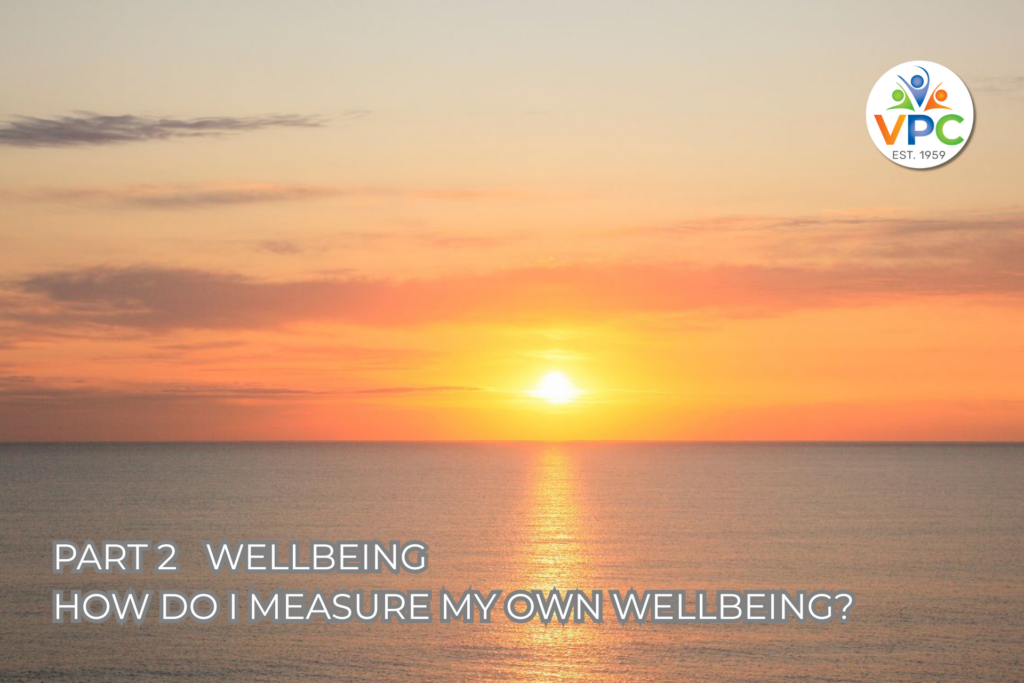
WELLBEING: HOW DO I MEASURE MY OWN WELLBEING- PART 2
It can be challenging to get a clear understanding of your wellbeing baseline and of how you are truly doing. You may notice specific symptoms, such as constant fatigue, poor sleep, and issues like joint pain or headaches. Additionally, you might recognise that you’ve experienced several stressful events over the past ten years, such as welcoming a new baby, feeling unfulfilled at work, dealing with a partner losing their job, or grieving the loss of a beloved pet. While each of these events is significant on its own, it can be challenging to comprehend their combined impact on your overall sense of wellbeing over time.
You may wonder, “Does it really matter if I view these issues separately or together? As long as I address them when they arise, isn’t that enough?” While being proactive is essential, there is a tricky aspect to consider: some physical symptoms, such as fatigue, headaches, or joint pain, can develop quietly. At first, they may come and go, making them easy to overlook amidst life’s busyness and the more pressing stressful events that demand your attention. It may not be until these symptoms become a significant disruption to your daily life that you finally take notice.
By the time these signs have fully surfaced, they are often more deeply rooted, making it harder to connect what’s going on in your body with what your mind is telling you, alongside what is happening around you. It can be very confusing. But those connections matter—they help you understand what’s happening, why it might be happening and what might need to change.
When you can’t understand the “why” behind a situation or feel as if it has emerged unexpectedly, you are more likely to panic. When this happens, you will be less able to think clearly and broadly about what is happening to you in that moment. As I mentioned earlier, your brain likes to resolve discomfort quickly and with minimal effort. This means it often falls back on familiar strategies, not because they are the best choice, but because they are the easiest and fastest to reach. It’s a bit like grabbing a hammer just because it’s nearby, even though what you really need is a screwdriver that you don’t even own yet.
By taking a broader perspective on your wellbeing, you can gain a clearer understanding of the entire situation before it reaches a critical point.
How Can I Check in on My Wellbeing?
When you are busy caring for others or simply caught up in your daily routine, it can be easy to overlook your wellbeing. Checking in on how you’re doing doesn’t have to be complicated or time-consuming. Here are some straightforward ways to gain a clearer understanding of your wellbeing:
1. Ask Yourself a Few Questions
Sometimes, all it takes is a quiet moment and a few gentle questions:
- How do I feel when I wake up and go to bed?
- Am I feeling on top of things, or am I easily overwhelmed?
- Do I have any energy left for the things I enjoy?
- Am I feeling connected or a bit isolated?
- Is my body trying to tell me something, through headaches, tiredness, or tension?
Even five minutes of reflection can help you address a symptom or situation gently before it becomes a bigger issue.
2. Think About the Whole Picture.
Wellbeing isn’t just physical health—it’s emotional, mental, social, and even spiritual. You could try rating how you feel in each of these areas from 1–10:
- Physical – Are you getting enough sleep, food, or movement?
- Emotional – Can you manage your emotions or are they managing you?
- Mental – Is your mind calm or constantly racing?
- Social – Do you feel supported, or like you’re carrying too much on your own?
- Spiritual – Do you feel connected to something meaningful, whatever that looks like for you?
Even this rough self-check can help you spot where you might need a little more support or space.
3. Try a Simple, Research-Backed Tool.
The Satisfaction with Life Scale (SWLS) is a well-established psychological tool used to gauge a person’s overall satisfaction with life. Developed in 1985 by psychologist Ed Diener, a key figure in the field of positive psychology, it offers a snapshot of how someone feels about their life as a whole.
Rather than asking a long set of specific questions about areas like work, relationships, or health, the SWLS invites broader reflection. Which is precisely what you want when you are evaluating your state of wellbeing. Additionally, it has been widely used by researchers and mental health professionals to help individuals better understand their general sense of contentment and wellbeing.
You can try it here:
👉 Take the SWLS via NovoPsych
There are clear instructions for scoring. Think of it as a snapshot in time—a way to notice where you’re at so you can gently move forward.
4. Plan to check in with yourself at least once a week.
Set a recurring reminder (even just on Sundays) and ask yourself:
1. What felt good this week?
2. What drained me?
3. What is one small thing I could do for myself next week?
Some people like using a traffic light system:
🟢 Green = I am doing well and feeling good most of the time.
🟡 Amber = I am starting to feel stretched more often than not.
🔴 Red = I am feeling overwhelmed. Every day feels too hard..
Alternatively, if you enjoy journaling, consider writing down or voice-recording your thoughts about how you feel regarding various aspects of your life. This practice also allows you to reflect on your day as you recall it.
5. Learn to Listen to Your Body
Your body communicates quietly, while your mind often rushes to redirect without thoroughly assessing the situation. Are you constantly tired, more irritable than usual, or feeling achy and heavy in your limbs? These subtle signs are important. Don’t wait for them to become more pronounced before making adjustments.
Tuning into your wellbeing doesn’t have to be overwhelming, and it is not about passing or failing. It’s simply about gaining a clearer understanding of how you feel about yourself and your place in the world right now. This process is not meant to induce panic or point out faults; instead, it aims to help you become more self-aware.
This awareness can take the form of a quiet moment of reflection, a simple checklist, or a structured tool like the Life Satisfaction Scale. Each check-in you do is a small act of self-care.
Wellbeing is not a luxury or just a nice-to-have; it is a fundamental part of living a grounded, purposeful, and fulfilling life. Throughout history, from ancient philosophy to modern psychology, the pursuit of wellbeing has involved more than just finding pleasure in the moment. It is about understanding yourself, recognising your needs, and responding to life’s challenges in ways that feel aligned and healthy.
As a parent or caregiver, prioritising your own wellbeing is not selfish, it is essential. When you take care of your inner world, you are in a better position to support those who depend on you.
In the next blog post, I will guide you through a deeper look at mindfulness, which is a powerful practice for strengthening your inner wellbeing. We will explore what mindfulness really means, how it fits into even the busiest days, and some easy ways you can start weaving it into your daily life—no incense or mountaintop retreats required (although those are lovely too).
Katrina Gow
Katrina is a compassionate and skilled counsellor dedicated to fostering mental health and resilience. In 2025, she will contribute her expertise as an advisor to a Deakin University project addressing school attendance issues, helping develop strategies for improving educational outcomes. Additionally, Katrina is part of the Victorian Parents Council team and writes insightful blogs for the VPC, offering support and guidance to parents navigating challenges in education and parenting. Through her work, she strives to create positive change in both individual lives and broader community settings.
References
Diener, E, Emmons, RA, Larsen, RJ & Griffin, S 1985, ‘The Satisfaction with Life Scale’, Journal of Personality Assessment, vol. 49, England, no. 1, pp. 71–75.

